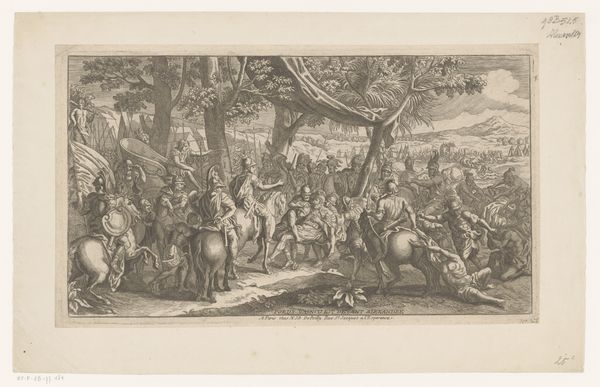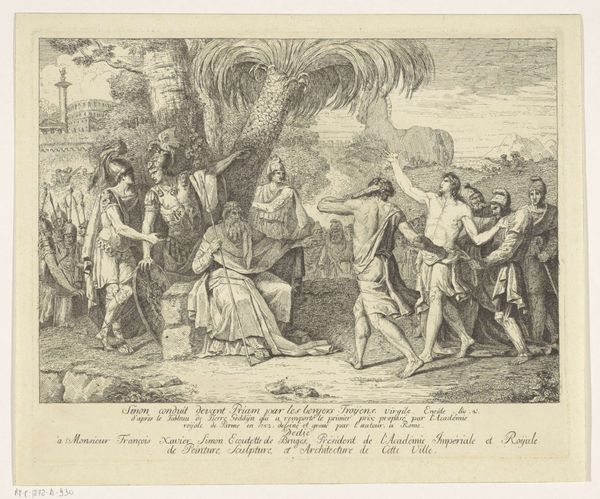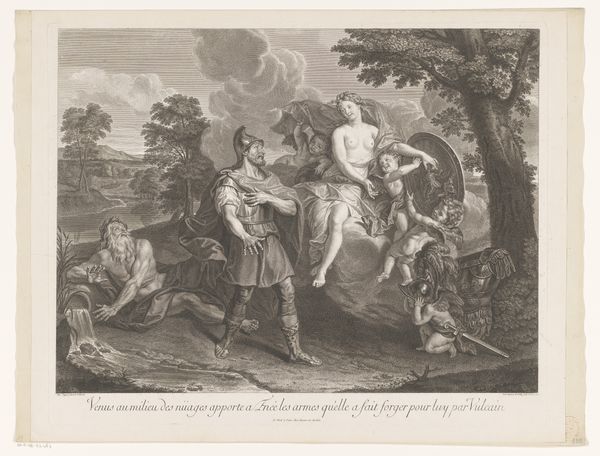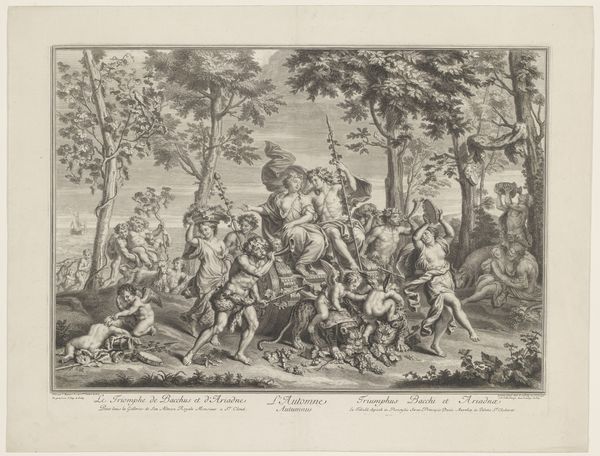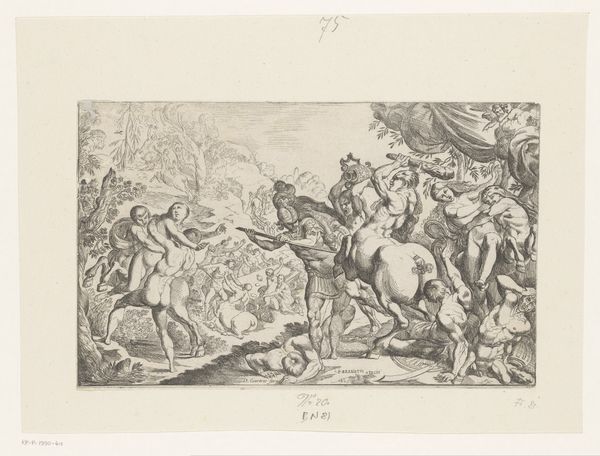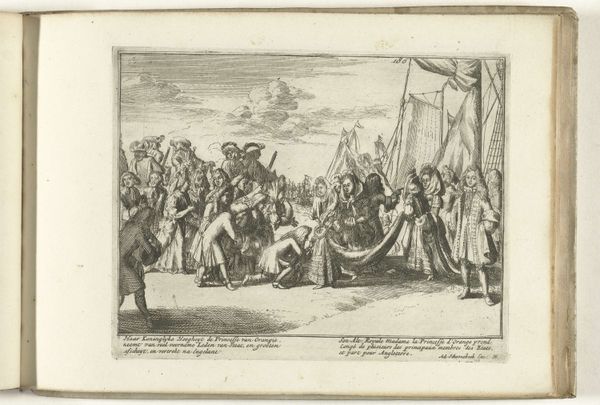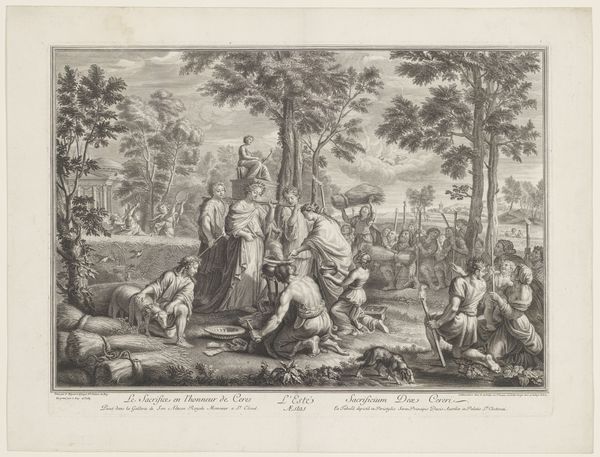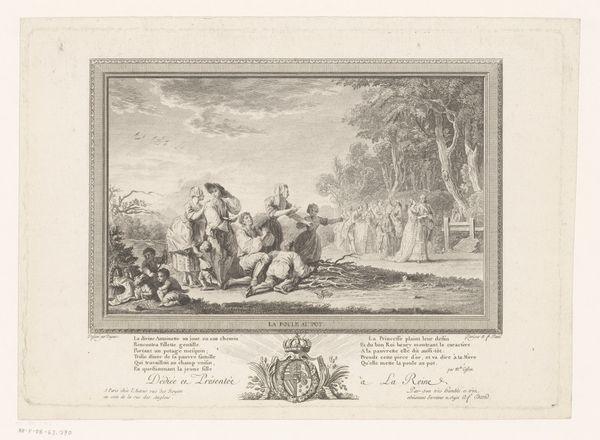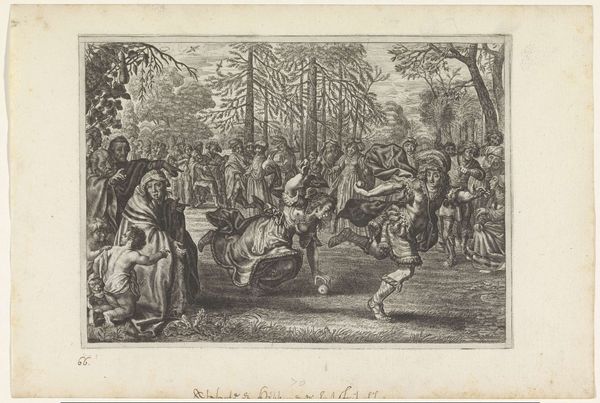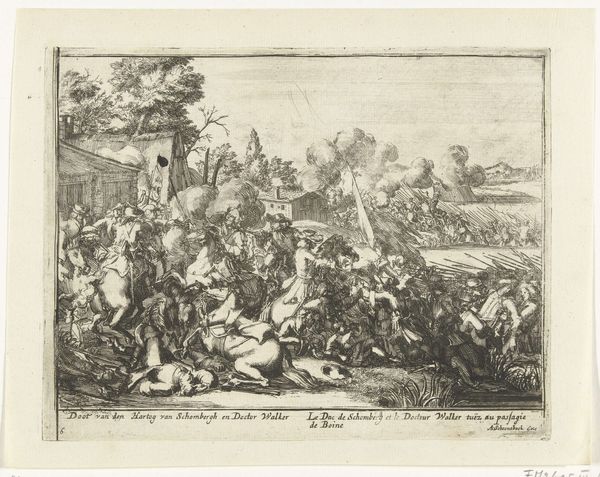
engraving
#
baroque
#
landscape
#
figuration
#
history-painting
#
engraving
Dimensions: height 160 mm, width 222 mm
Copyright: Rijks Museum: Open Domain
Editor: Here we have Crispijn van de Passe the Younger’s engraving, "De IJzeren Eeuw", dating from around 1636 to 1670. It's a pretty stark image, full of violence and despair. I'm curious, what are some of the socio-political messages you find within this print? Curator: Well, the title translates to "The Iron Age," immediately connecting it to a classical concept of societal decline. This image likely critiques the socio-political turmoil of 17th-century Europe. Do you notice how the artist contrasts scenes of domestic tranquility with violent conflict? Editor: Yes, there's a clear separation. On one side, there’s a family seemingly trying to flee or protect themselves. The other shows soldiers attacking civilians amidst what appears to be a burning town. Curator: Precisely. This stark juxtaposition was common during the Baroque period, especially in the wake of the Thirty Years’ War. Prints like these served as potent forms of social commentary, highlighting the brutalities of war and questioning authority. Consider the role prints played then, circulating easily and shaping public opinion, a vital, powerful instrument of conveying imagery at that time. What could the artist be saying about the role of leadership here? Editor: It's hard to tell directly, but the chaos definitely seems to imply a failure of governance. People are suffering, there's no order, it seems like a society collapsing. It makes me think about the power of the visual to stir social unrest and discussion even way back then. Curator: Indeed. This image reminds us that art often acts as a mirror reflecting societal anxieties. Furthermore, the proliferation of such prints hints at a burgeoning public sphere, where political ideas were debated and visualized. It speaks to art’s crucial role in reflecting and shaping societal narratives during periods of conflict. Editor: I didn't consider it as a part of emerging public discourse at the time. This artwork definitely gave me some important historical context to think about, so thank you for elaborating on those aspects.
Comments
No comments
Be the first to comment and join the conversation on the ultimate creative platform.


